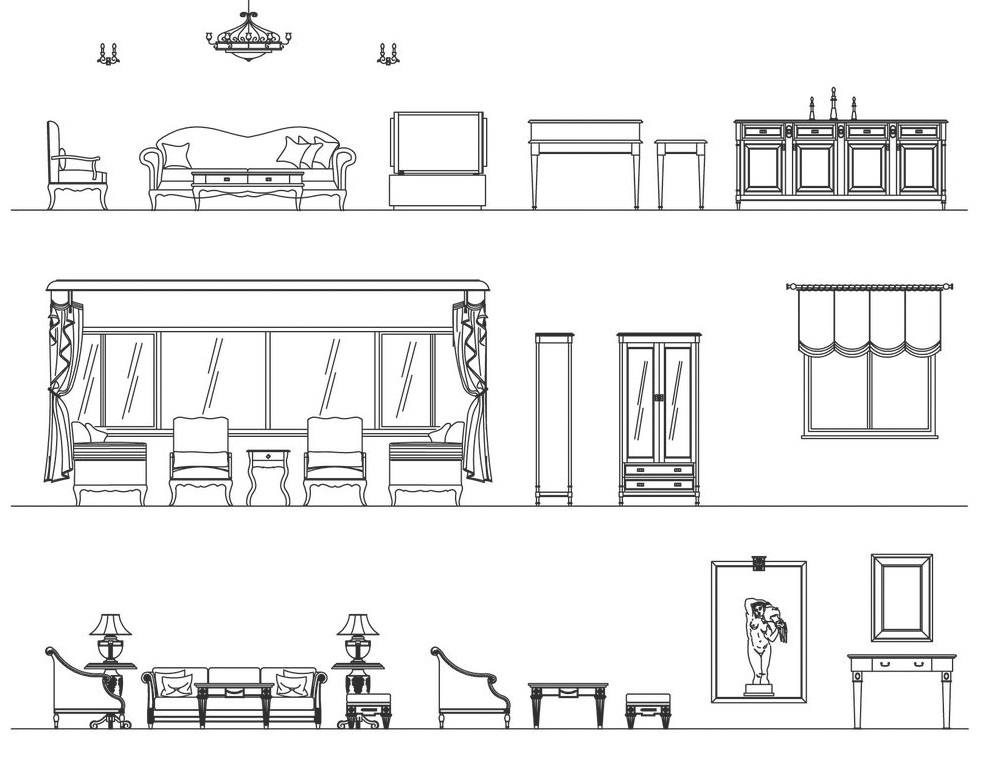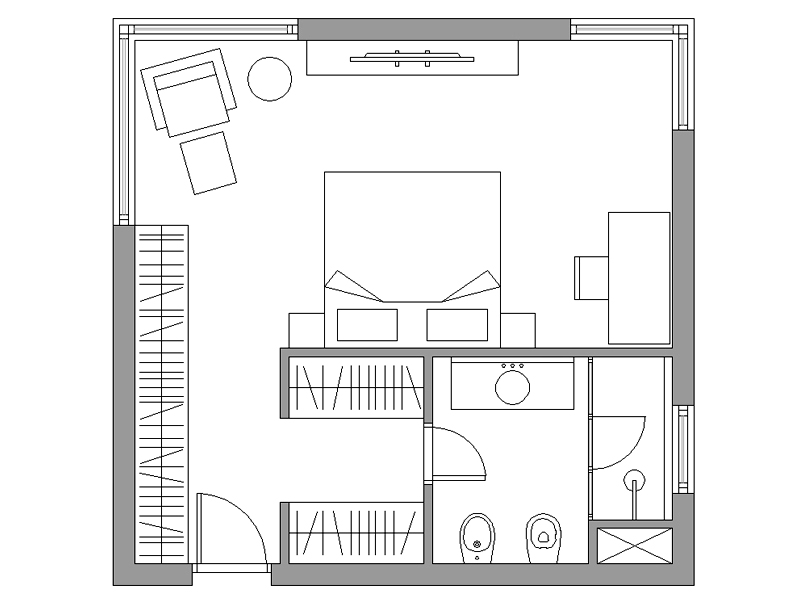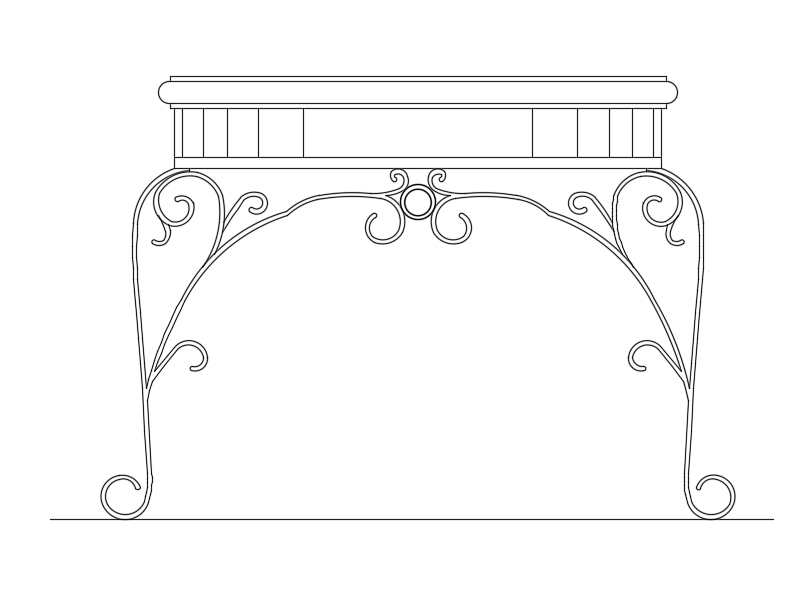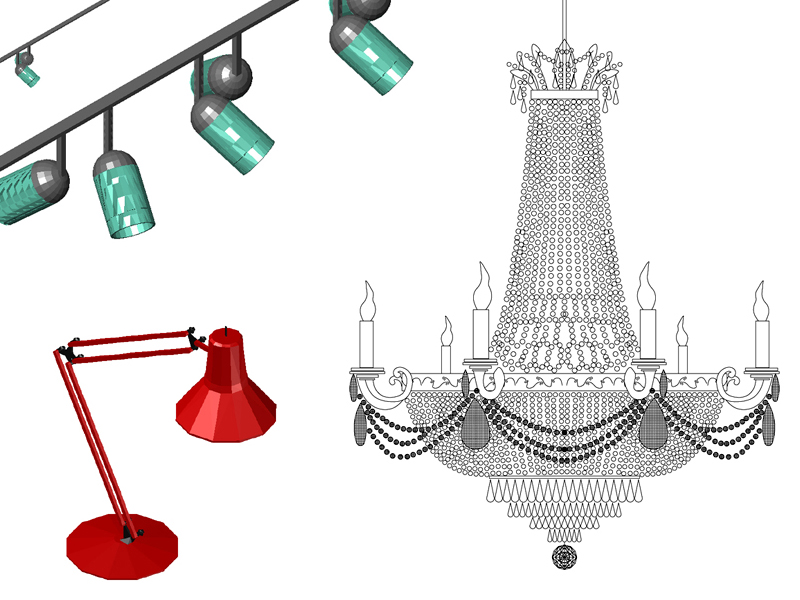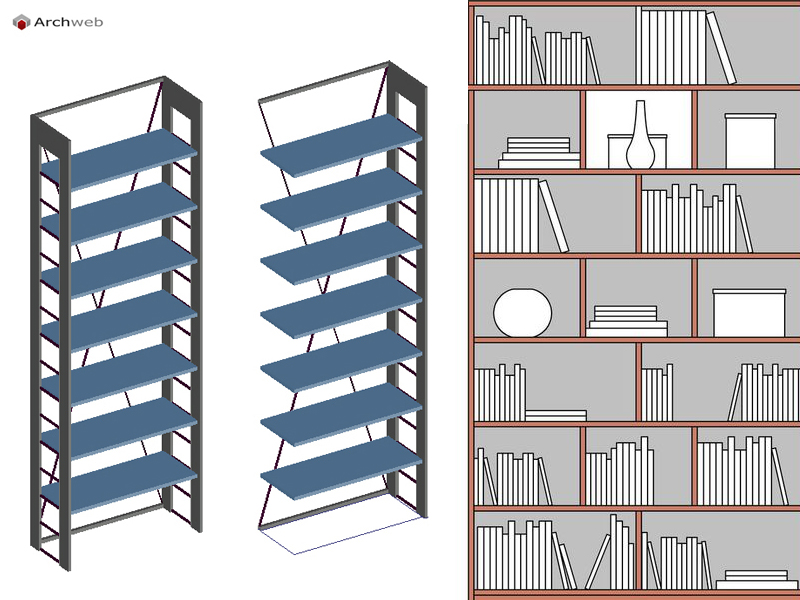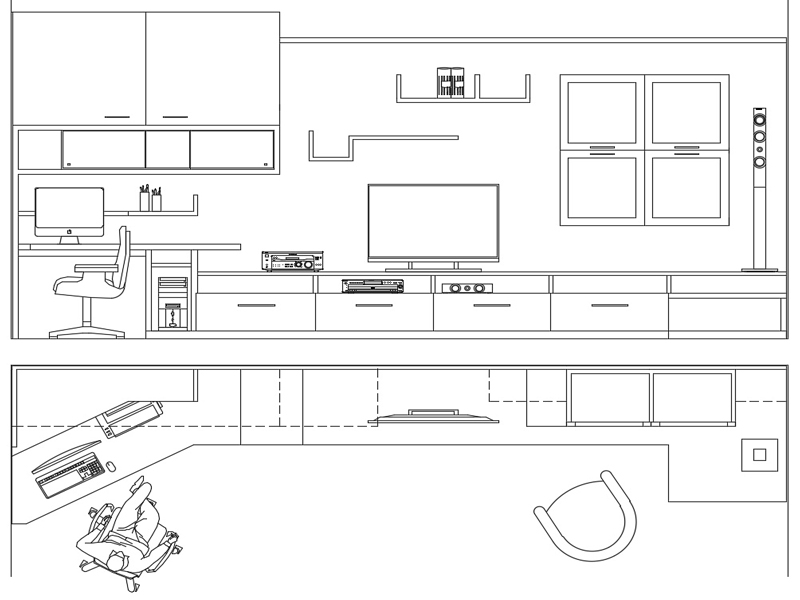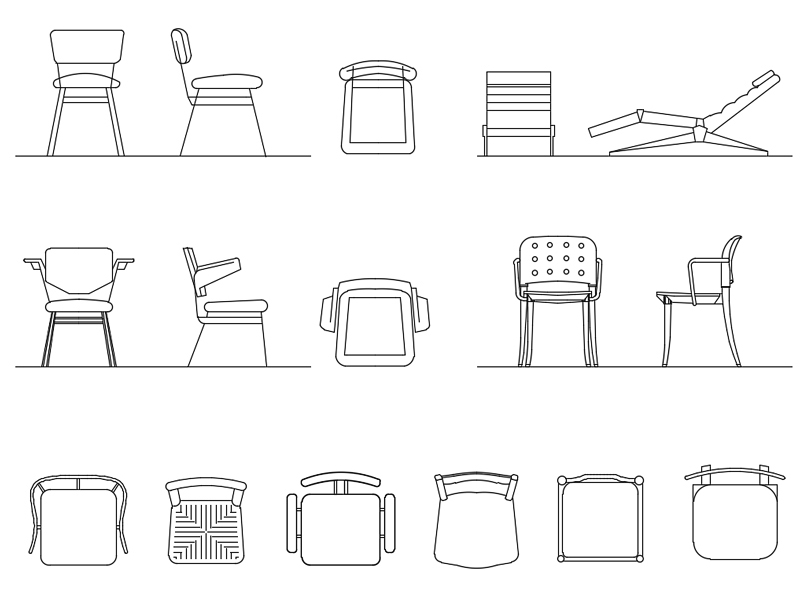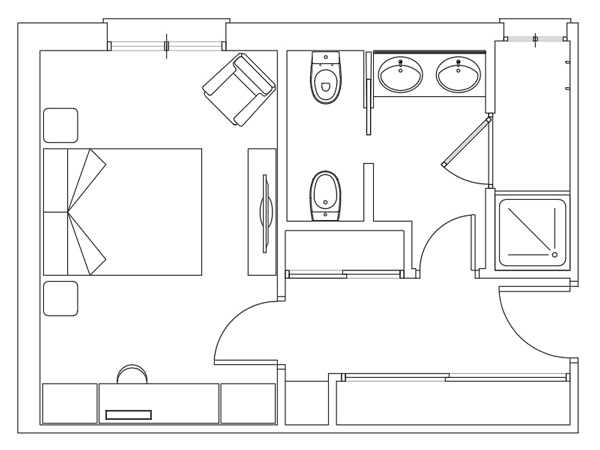Working from home
How space responds to current needs

Unlike the past, in which the work space was conceived as an integral part of the office and company headquarters, today with the change in social values and needs and the spread of technological innovation, this place takes on different connotations. The current company policy often provides for the possibility of carrying out one’s work from home, remotely, on some days of the week.
Furthermore, there is a growing increase in new professional figures who work independently: this is the case of freelance workers, freelancers and VAT-registered collaborators. This social scenario inevitably reflects on the spatial conception of the place intended for work which is thus dematerialized, according to its traditional meaning, making flexibility and adaptability its key principles. Today the home office is becoming an indispensable prerogative for many which requires some attention from the point of view of the function and distribution of the home environments.
Residence must include activities other than the strictly residential one and the first is work. In this regard, first of all it is good to define the type of work being carried out and the needs that it implies. A fundamental aspect is represented by the level of privacy required: are these professions that require meeting and exchange with the client or, on the contrary, are independent activities carried out without interpersonal relationships? In the first case it will be necessary to create a material separation of the area intended for work and appointments, in order to avoid an unpleasant fusion between the private and work spheres. If, however, visits from outsiders are not foreseen for the work being carried out, there is greater freedom in the organization of the different functional areas.
Faced with these needs, the home workstation project must fit in coherently with the home environments, guaranteeing comfort, functionality and aesthetic care. In fact, since there is a close link between the well-being of the worker and his productivity, as is done on a large scale in company offices, even in domestic spaces intended for study and work, it is necessary to ensure a good microclimate, suitable lighting and adequate conditions of concentration and privacy.
The choice of natural materials, linear shapes and colors designed specifically for personal tastes can contribute to the success of the project in terms of user satisfaction. The direct connection with the natural world also helps to achieve psychophysical comfort: the insertion of a plant or the use of certified materials is sufficient to significantly improve working conditions. From a planimetric point of view, the best choice is to prepare a specific room for work use but these are rare situations and only possible in large apartments or independent houses. This solution is advantageous from the point of view of privacy and acoustic comfort.
However, if space is limited, it is necessary to create a corner where you can carry out your business in safety and comfort. In this regard, it is good to consider what the specific needs are and choose an area of the house that can satisfy them. For example, if you carry out activities that require good lighting it will be preferable to choose the living area, but if you need to concentrate the sleeping area is the most suitable as it is the least frequented and consequently the quietest. To set up a study area you don’t necessarily need to have large sizes, what matters is recreating an atmosphere that makes those who have to work there feel comfortable.
If functionality must be one of the guiding elements on which to implement design choices, aesthetics must not be neglected either. In fact, especially in the case of work corners inserted in pre-existing environments, it is necessary to ensure overall coherence and balance in the finishes and furnishings, in order to “camouflage” the area inserted at a later time as much as possible. In conclusion, although each profession is different from the other and requires specific conditions, it is possible to state that there are some elements to always consider in order to achieve a good design result in terms of usability, safety and comfort.
Where to place the study corner
As mentioned, the space intended for the study can occupy an independent room but more often find place in a corner belonging to a home environment. Analyzing the first example, if contact with clients and colleagues is expected, it is a good idea for there to be a hallway or corridor between the study and the rest of the house that acts as a filter between the area frequented by third parties and the private area of the residence.
The best choice is to place it near the entrance to the apartment so as to be immediately accessible by external customers who will not come into contact with the more intimate rooms of the house. This type of attention is not necessary in the case of personal studies that are used solely and exclusively by the worker. First of all, you need to establish the size of the room you have available, whether there are any openings and how to distribute the furniture necessary to carry out your activities regularly.
It is a good idea to organize spaces with a view to maximizing their functionality and making the studio comfortable and tidy. Furthermore, it is advisable to keep in mind that even though it is a workstation located within domestic environments, it must be guaranteed sobriety, brightness and order, in view of conference calls and video calls. From the point of view of furnishings, they must be chosen based on needs and taking into account availability and spatial configuration: the desk must be large enough to accommodate a PC, a lamp and documents but its shape must be chosen based on the room and the presence or absence of windows. In fact, the latter are very important for carrying out work during daytime hours, because they allow you to exploit natural light, ensuring comfort and greater energy savings.
As mentioned, the space intended for the study can occupy an independent room but more often find place in a corner belonging to a home environment. Analyzing the first example, if contact with clients and colleagues is expected, it is a good idea for there to be a hallway or corridor between the study and the rest of the house that acts as a filter between the area frequented by third parties and the private area of the residence.
The best choice is to place it near the entrance to the apartment so as to be immediately accessible by external customers who will not come into contact with the more intimate rooms of the house. This type of attention is not necessary in the case of personal studies that are used solely and exclusively by the worker. First of all, you need to establish the size of the room you have available, whether there are any openings and how to distribute the furniture necessary to carry out your activities regularly.
It is a good idea to organize spaces with a view to maximizing their functionality and making the studio comfortable and tidy. Furthermore, it is advisable to keep in mind that even though it is a workstation located within domestic environments, it must be guaranteed sobriety, brightness and order, in view of conference calls and video calls. From the point of view of furnishings, they must be chosen based on needs and taking into account availability and spatial configuration: the desk must be large enough to accommodate a PC, a lamp and documents but its shape must be chosen based on the room and the presence or absence of windows. In fact, the latter are very important for carrying out work during daytime hours, because they allow you to exploit natural light, ensuring comfort and greater energy savings.
LIVING AREA
This is the most illuminated home area of all during the day and can include kitchen, living room and dining room. It is perhaps the most exploited during the daytime and this could lead to a lower level of concentration due to the numerous sources of disturbance (televisions, appliances, chatter). In the case of the kitchen, it may be convenient to create a corner used as a study, equipped with a support surface and a blackboard where you can mark notes and deadlines, but at the same time write the shopping list as needed. In this case, a chair from the dining table can be used as a seat (it is assumed that one does not work during mealtime) and as a desk a shelf, so that if not used, the workstation will blend in with the furniture and the components of the kitchen.
If you want to insert the home workspace in the living room, it is very important to follow the style that distinguishes it. First of all it is good to study the spaces and choose the corner where to insert the study: the best choice coincides with a space that is as close as possible to a window, since natural light acts as a fundamental element for carrying out the work during the hours daytime. In this regard, attention must be paid to the location of the furniture, in order to avoid the appearance of unpleasant reflections on the PC monitor. For this reason, it is advisable to place the desk perpendicular to the opening and position the seat so as not to create areas of shadow.
Furthermore, the workstation must guarantee the free movement and comfort of the user, guaranteeing him enough space to move the chair without hitting walls and furnishings, to change its position and to move easily. In addition to natural light, artificial light is also essential to be able to continue your activities during the late afternoon, in the evening or on sunny days: for this purpose it is ideal to provide an electrical outlet to be able to power a preferable table lamp with light white and adjustable.
As for the style of the environment, while for the kitchen which is considered a more creative and informal space you can indulge in the choices, in the living room it is preferable to adhere consistently to the whole. If classic furnishings predominate, low consoles or desks will be perfect accompanied by comfortable armchairs so as to combine functionality and aesthetics. Sometimes, the choice of inserting a bookcase or shelves can fulfill the dual function of dividing the space and accommodating texts and documents indispensable for the performance of one’s work. In order to make work more pleasant, you can choose to insert some plants which, in addition to representing a pleasant piece of furniture, are able to purify the air and make the environment healthier.
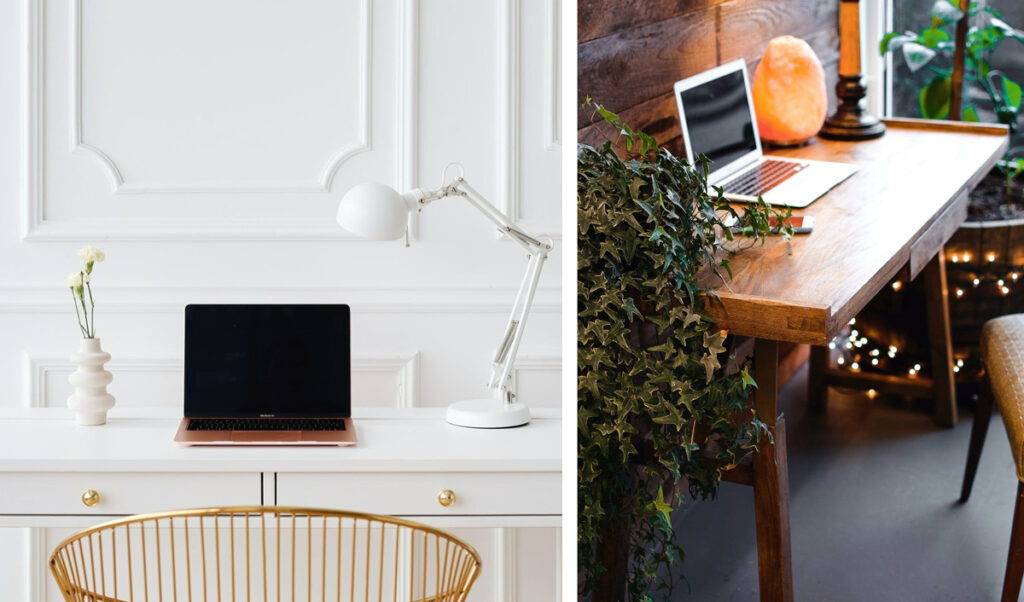
SLEEPING AREA
A valid alternative to the living room and kitchen is represented by the sleeping area which has the advantage of being quieter and more intimate than other rooms in the home. In fact, the bedrooms are usually inaccessible environments for guests and home patrons and for this reason it is clear that this type of location is not compatible with those who need to make appointments with customers and colleagues.
The first element to consider is the position, better if not next to the bed. The organizational aspect may provide for diversified options but all of which are capable of ensuring concentration and privacy. One of the most popular choices is to place the study corner near the window (as for the living area) and sometimes, if you have a generously sized window sill, you can use it as a desk, so as to fully enjoy the pleasant light natural and sometimes a valuable sight.
Another idea that makes the home workstation more collected, provides for the distribution of the necessary furniture behind the head of the bed. Often, the compartment behind the bed (which is centrally located) is used to place the walk-in closet but in this case, if the dimensions allow it, this space can be used for another function. If the bedroom is characterized by small dimensions, a trick could be to recreate a retractable study compartment in the closet that becomes evident when needed. If, on the other hand, the bedroom is larger, the study corner can occupy an independent space where you can move in greater comfort. In any case, you need to recreate a small “oasis” where you can concentrate and where you feel comfortable, in order to increase productivity and consequently your professional satisfaction.
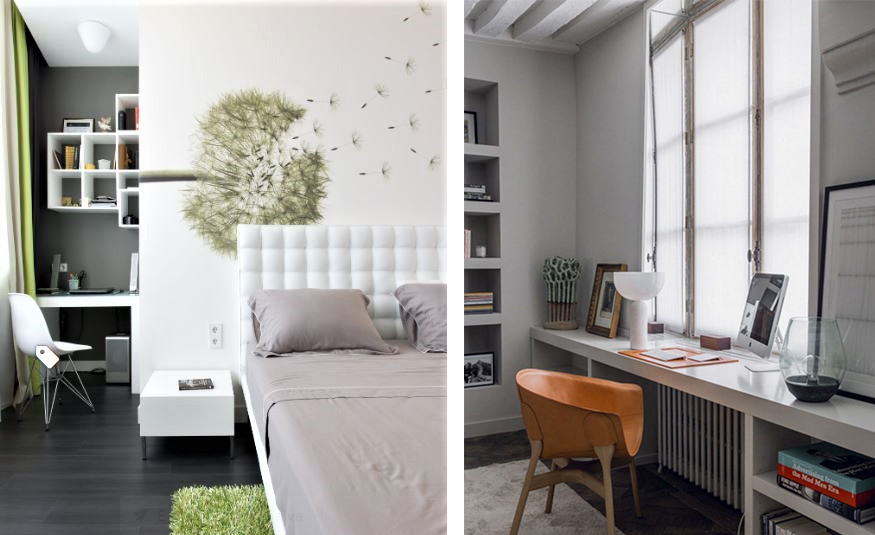
Left photo: Svoya Studio. Right photo: Jerome Galland
How to choose the furniture
Once the space and physical characteristics that the studio must have are determined, it is good to define the furniture and accessories necessary for your needs. The optimal choice combines comfort, ergonomics and design: each piece of furniture must guarantee psycho-physical well-being so as to facilitate the performance of the work activity and maximize its profit. A valid model, to be used as a “typical” workstation, consists of a seat, a support surface and a lamp functional to the type of work. Each additional accessory and accessory contributes to the personalization of the study corner. Now let’s see how best to choose each component.
SITTING
It represents the most important piece of furniture from the point of view of physical well-being: you have to choose it very carefully because sometimes you spend many hours a day there. The study chair must first of all be ergonomic: respect the size and needs of the human body, in order not to cause damage and unpleasant malaise. What matters is that the seat guarantees a good level of comfort and to this end it must have some important characteristics.
First of all is the adjustable height, so that the chair can be adapted to individuals with different characteristics and who carry out various work activities. Furthermore, it is good that the seat can also be flexible in order to tilt it, in case of need, in order to change the position of the back without compromising the correct posture. On the market there are several solutions that differ in performance and design, however they are not always adaptable to all environments. The most innovative are those with knee support and rocking arches at the base which make them very flexible; the negative side is represented by the back that is not always present and by the continuous movement which ensures well-being of the limbs but is not always welcome.
Furthermore, since it is not possible to change the height, these products presuppose the use of adjustable desks. Another choice may fall on the chairs designed to differentiate positions and therefore equipped with tilting seat, adjustable height, knee supports and base with rotation (even backwards). Finally, there are the most popular office chairs by far that guarantee an average level of comfort but are a bit bulky, therefore unsuitable for small study corners.
For this type of chair it is good to choose breathable materials that ensure its free use even during the hottest seasons. Regardless of the typological choice, the work chair must guarantee a correct position for the user and avoid static and stiff limbs and pelvis. In a standard session, the back is located parallel to the PC screen and the angle of the pelvis is 90 °. In the case of dynamic chairs, the bust-knee angle is greater and there are supports for the knees and back. In both cases, the posture is correct and thus ensures well-being during the entire course of the work.
DESK
In close relationship with the session, the support surface ensures the correct performance of the work tasks. Depending on the style and type of chair chosen, the desk can be fixed or adjustable in height: in the first case it is necessary to opt for a product that ensures the free movement of the user once seated, in the second case instead, being flexible it can adapt to specific needs. What matters is that the table top ensures the user’s well-being and increases productivity, since it is a piece of furniture that acts as a real work tool.
As for the dimensions, it depends a lot on the space available but there are reference values that must be respected in order to be able to work safely and while preserving one’s health. The height must be at least 70 cm, the depth must ensure a space for the support of the arms and for the arrangement of the PC. In this way it is also possible to respect the minimum distances that must elapse between the screen and the user’s eyes, in order to preserve eyesight and avoid symptoms of fatigue from the end of the day (about 65 cm).
In addition, depending on the type of work being carried out, it is necessary to establish how much space you need and if the chosen desk is not enough it will be good to equip it with some auxiliary furniture. Examples of this are the floor pedestals, sometimes equipped with wheels so that they can be moved as needed, or the wall shelves useful for storing texts and documents. Solutions such as storage compartments or wall organizers are also useful for keeping order and always having everything at hand.
In choosing the desk that best suits our needs, it is also important to consider the material, the shape and the style: ranging from the cheapest laminate products, to the more resistant ones in metal and steel, up to the most classic and aesthetically valuable solutions in wood. Each material has some pros and cons and it is necessary to choose it by estimating its durability, resistance and aesthetic result.
LAMP
It is an indispensable piece of furniture for the workplace, since it influences the results in terms of user profit and health. In fact, lighting is an element of primary importance for the correct performance of work activities.
Auxiliary to natural light, artificial light must guarantee comfort during the evening hours and for this purpose it is necessary to opt for the most suitable luminaires. When choosing a table lamp it is good to take into consideration some factors that can prove decisive for good functionality. First of all, the possibility of adjusting the inclination and position of the arm, in order to better direct the light on the work surface. From the point of view of the chromatic choice and of the temperature of the light source, for this type of function a light colored lamp of medium temperature is recommended, neither too cold (would tire the sight) nor too hot (unsuitable for precision work).
Finally, an added value of the study lamp is represented by the dimmer, a system that allows you to vary the intensity and color of the light according to need. Furthermore, this device guarantees significant savings in energy and economic terms.
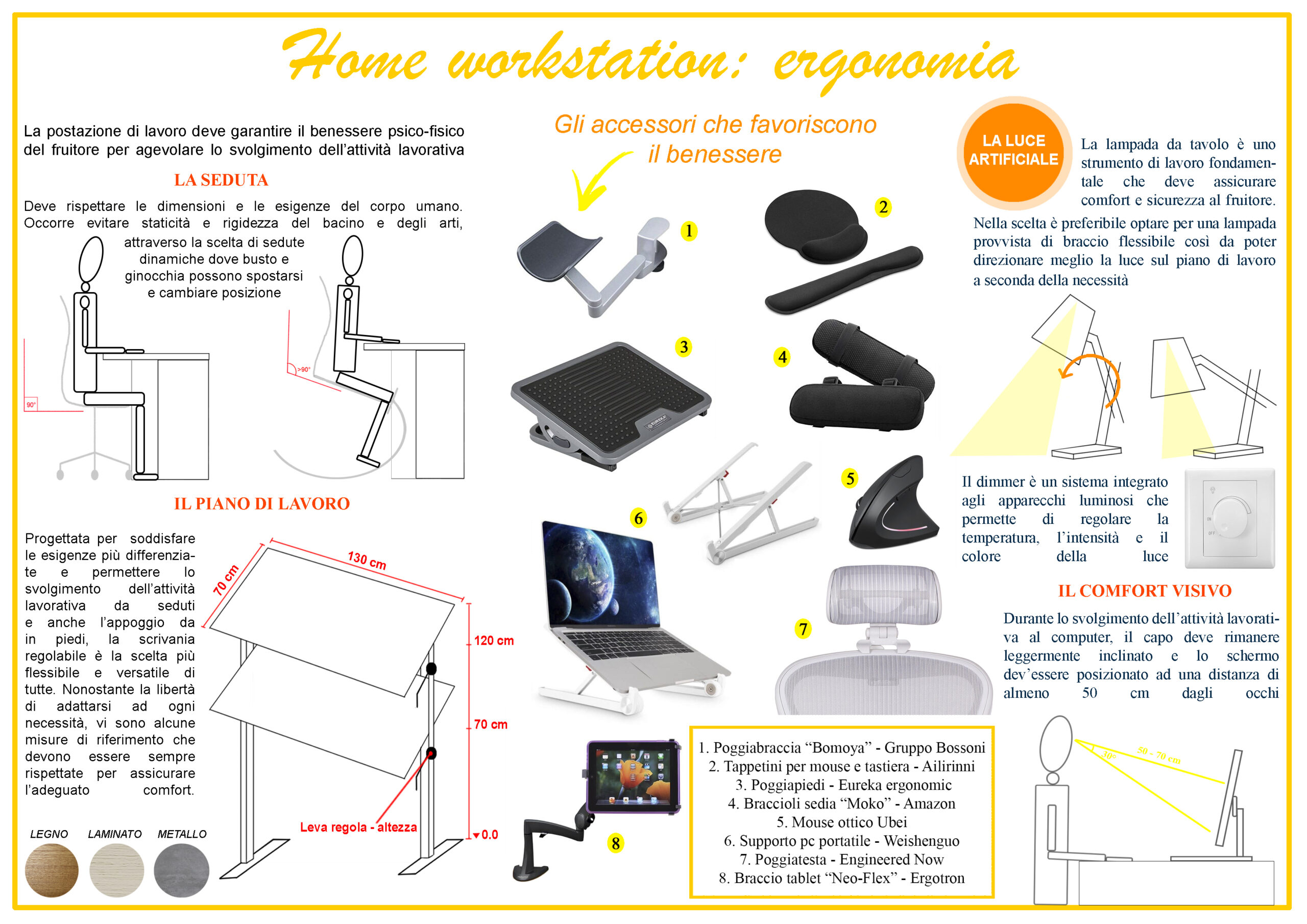
SHELVES AND LIBRARIES
In order to maintain order and organization in the study corner, it is optimal to insert shelves and small bookcases, essential for housing important texts and folders. Sometimes they are custom designed with the aim of defining a space or dividing the home work station from the rest of the environment. In other cases, on the other hand, modular elements are chosen that allow to vary the shape and size of the equipped wall according to the specific time and need. Often the most used materials are wood and lacquered laminate, which can give the rooms a clean and organized look. If you want to add a vital touch to the environment, small plants can be placed on the shelves that will be able to make the air healthier and more pleasant and relaxing spaces.
ACCESSORIES AND COMPLEMENTS
The study inserted inside the domestic environments must take into account the furnishing style but it is essential to add a few personal touches to make the final result more responsive to your tastes. Carrying out the work in a space that reflects one’s personality ensures greater well-being and more satisfying results. Given that you should not overdo it with accessories and decorative elements, since it is still an area of the home with a more formal activity, you must choose each piece at best according to your tastes.
It is necessary to ensure the right balance between family environment and professionalism, through the care of small details that can stimulate the creativity and productivity of those who work. In addition, the insertion on the desk of some personal object, a frame with photos or a gift that we care about, guarantees greater confidence with the space and a consequent emotional serenity thanks to which it is possible to work better. To this end, it is preferable to opt for neutral colors and natural materials that can reduce stress and increase concentration.
A solution that combines business with pleasure is represented by sound-absorbing modules: in addition to acoustically insulating the study corner, they decorate the walls thanks to the countless shapes and different colors. In addition, the innovative fabric finishes guarantee a high aesthetic result, meeting the taste and needs of a large catchment area. With the aim of maintaining order in the home workstation it is good to equip it with a wall or desk organizer thanks to which pens, notes and accessories will find their place.
Space saving solutions
If the study corner does not enjoy large sizes, it is necessary to opt for solutions that optimize space and make it functional. What really matters is to exploit each area in order to recreate a small home office where nothing is missing.
Sometimes, it is necessary to insert a study corner inside really small domestic spaces: this is the case of the studios where all the functions are concentrated in a single environment. The solution is often represented by proposals that blend directly with existing furnishings and spaces: this is the case with the workstations inside the wardrobes, as long as they are equipped with sliding or folding doors that allow sunlight to filter through. In this case, it is necessary to choose wardrobes with a depth such as to accommodate a support surface large enough to be able to carry out work activities in a practical and comfortable way. It is also possible to insert some shelves, thus also taking advantage of vertical spaces to order books and files.
If you opt for this solution it will be good to have folding chairs that ensure comfort and that can be closed and placed inside the wardrobe once you have finished working. On the other hand, if you feel the need to create a real, more secluded studio that guarantees greater privacy and concentration, you can think of allocating the mezzanine for this function. This is a very frequent solution that allows you to divide household functions even more. In this case it will be possible to choose a classic workstation with desk, seat and lamp which will prove indispensable if this part of the apartment is a little less bright. Depending on the height guaranteed by the mezzanine, it is necessary to choose the most suitable furniture: if it is contained, you can opt for cushions and low tables, always measuring them on your ergonomic needs in order not to compromise physical well-being.
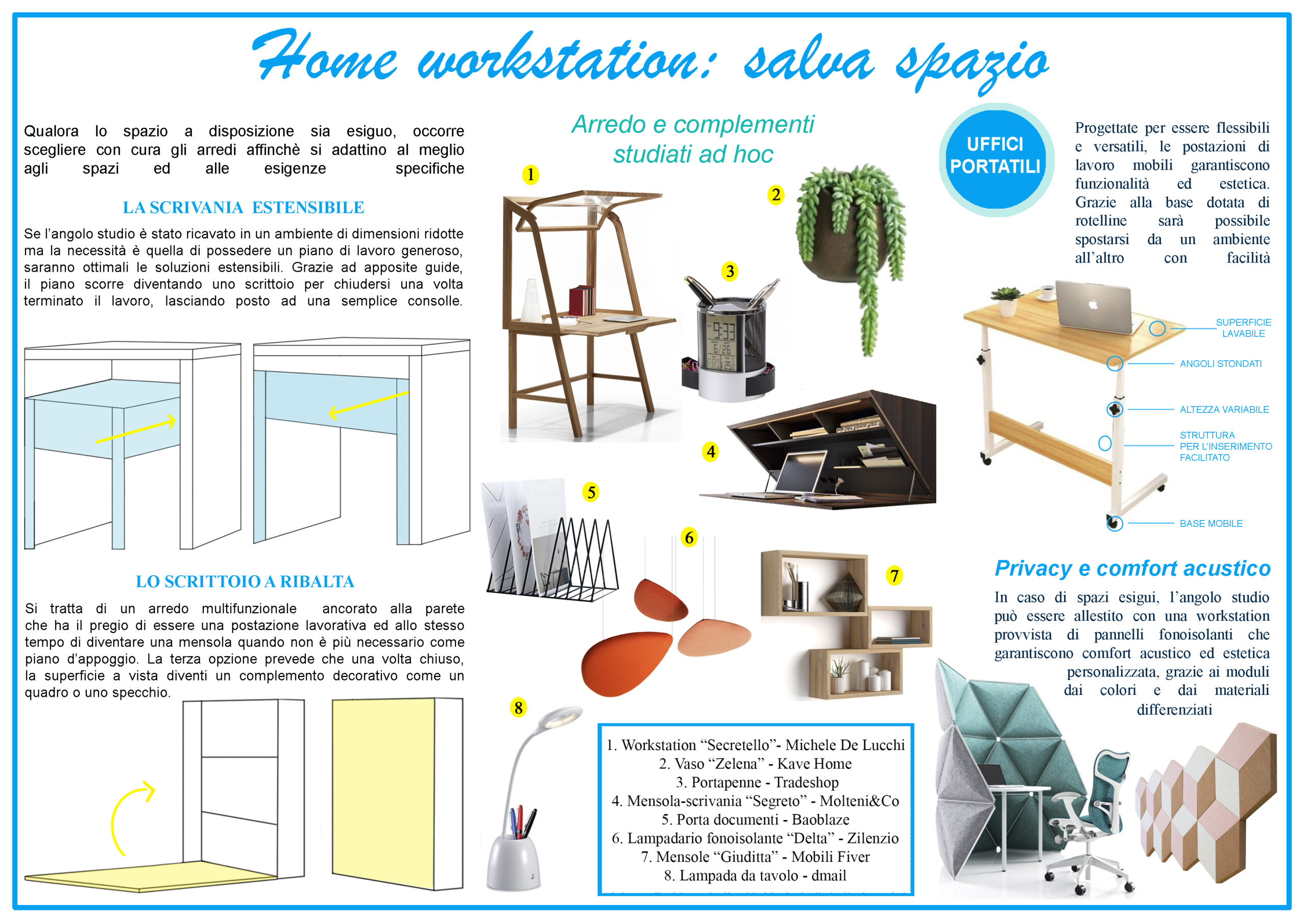
If, on the other hand, you do not even have a small space that can host a complete work station, you can recreate “buffer” areas where you can “lean” in case of need (send some e-mails, check a document, print files). In this case, the study corner constitutes a temporary space that only requires concealed solutions, integrated into the walls of the chosen rooms.
Among the most popular products, there are the drop-down tops and the removable ones on which, with a quick gesture, you can place a laptop (given the size and low weight of the most modern models) and work. This type of furniture fixed to the wall has the advantage of becoming a work station and at the same time a shelf when it is no longer necessary for carrying out the work activity.
Finally, if the home plan does not lend itself to accommodate a workstation, today there are “buffer” remedies represented by the so-called “portable offices”, trolleys on which to arrange what is needed and which at the time of need are moved from one room to another. other of the house. Once the position and type of study corner that best suits the physical conformation of the residence has been established, it is always necessary to keep in mind that the most suitable accessories and devices are not the standardized ones.
Instead of the desktop computer, it is good to prefer the laptop and if you want it to be fixed, you must opt for an “all in one” model that excludes the dimensions of the relative components. The printer must also be multifunctional and include a fax, scanner and copier inside, preferably compact and space-saving (the latest models can be placed directly on the desk without taking up much space). Sometimes, with a slightly larger initial investment it is possible to meet specific needs and carry out your work from the comfort of your home.
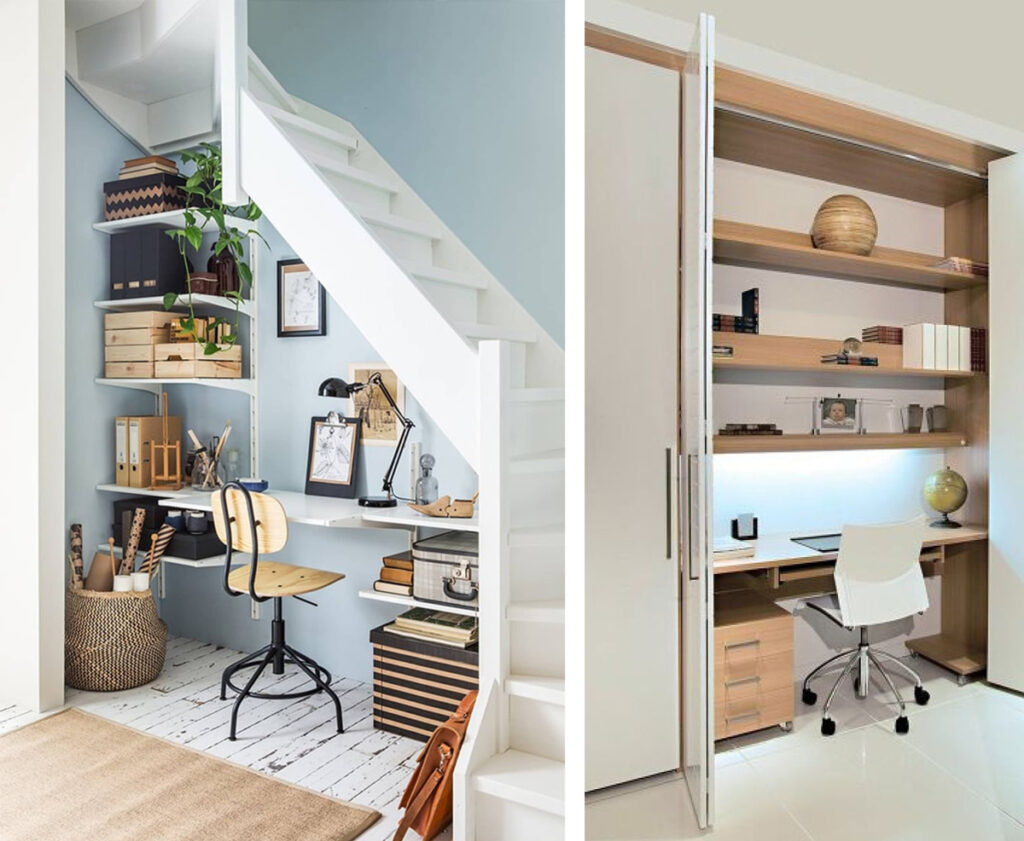
Right photo: www.arredaedintorni.blogspot.com
New guidelines
Since recent studies have shown how the design of the environment intended for work can affect the mental and physical well-being and productivity of the worker, some currents of thought propose the application of models still considered alternative and not widespread. This is the case of Feng Shui, an ancient Chinese art according to which based on positive energy flows it is possible to make choices aimed at obtaining harmonious and comfortable environments.
Using Bagua, a scheme that associates vital areas and values with home areas, it will be possible to better circulate energy and increase productivity. The correct choice of furniture arrangement, colors and materials will help to recreate an environment measured on specific needs. The first element that needs to be considered is the sense of security and protection that the user must possess during the course of his work. To this end, it is preferable that the desk is positioned near a wall so that once seated, we concentrate better thanks to the absence of uncontrollable movements behind us. The work surface must have a square and regular shape to convey a sense of stability and security.
According to feng shui, each area of the desk corresponds to specific values and taking care of the organization of the objects to be placed leads to positive results in terms of success and productivity. For example, you should place the phone on the right (social relations area) while the pc should occupy the position on the left of the desk (knowledge area).
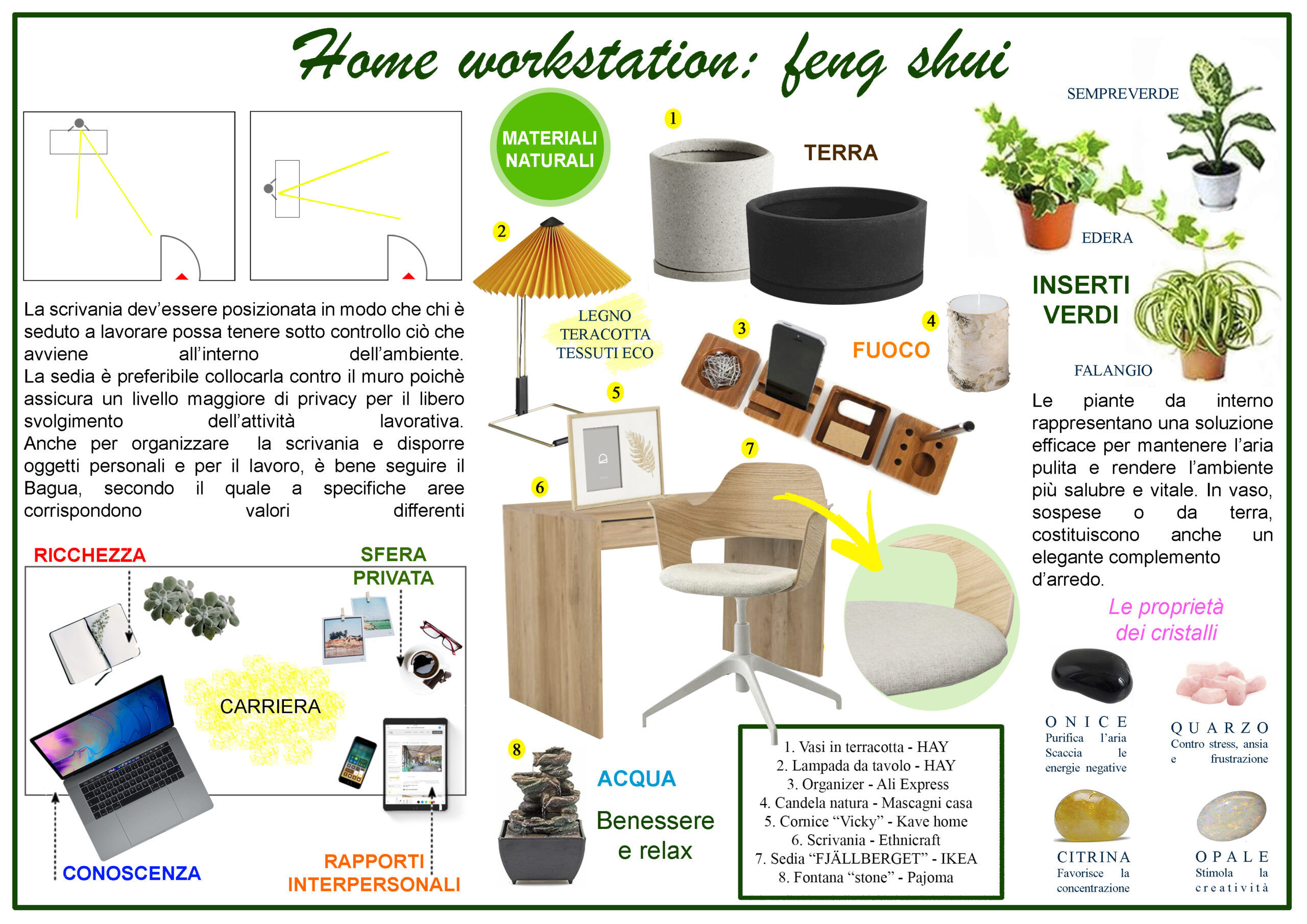
As for the chair, it must be positioned so that you can see everything that happens in the room once you are seated. Each piece of furniture must not weigh down the environment but perform precise functions and must never be chosen at random: preferable the limited heights that allow light and energy flows to circulate freely.
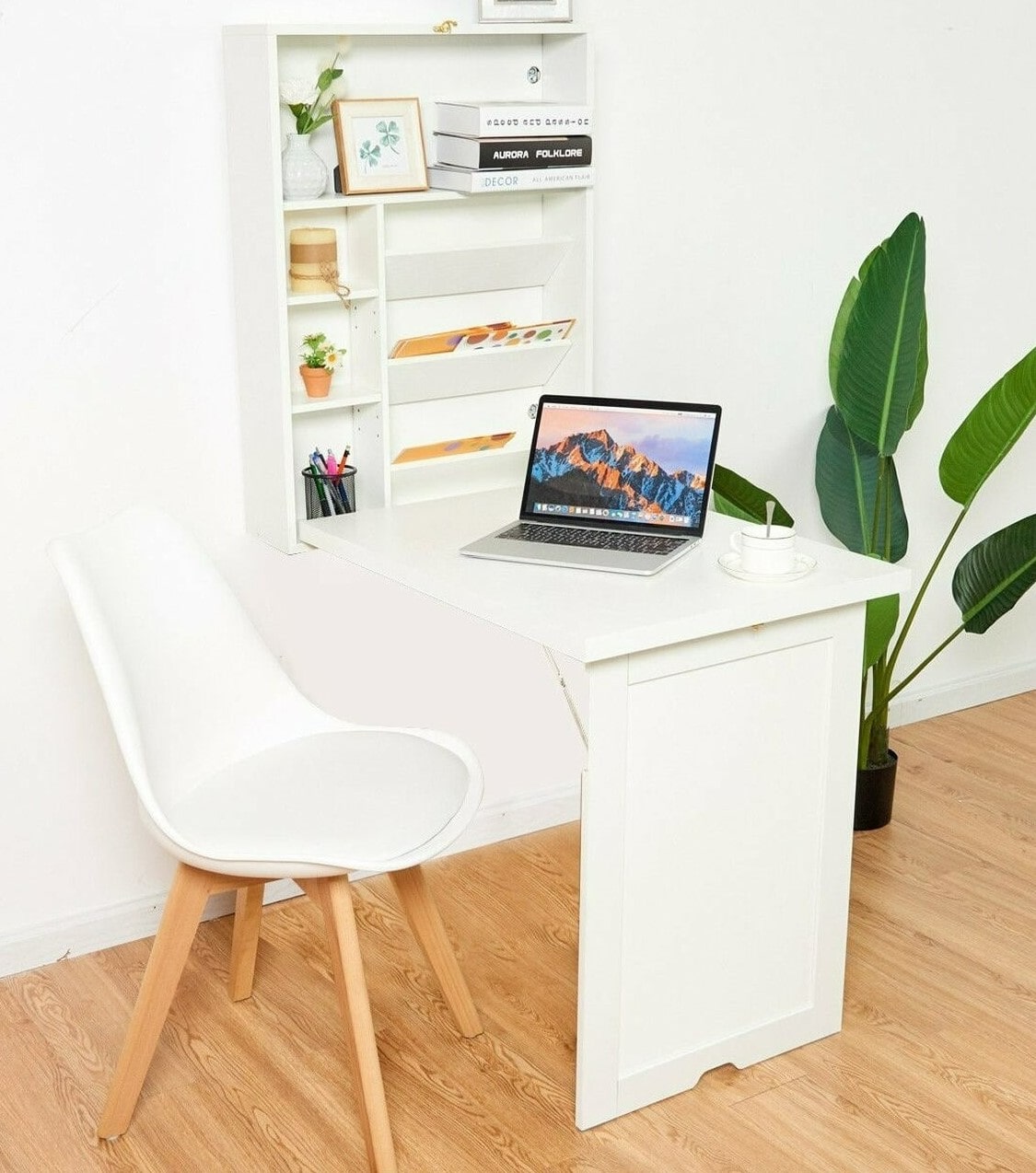 In the photo a corner of the working environment designed keeping in mind the rules of Feng Shui
In the photo a corner of the working environment designed keeping in mind the rules of Feng Shui
From the point of view of color choices, it is essential to opt for colors that meet specific needs: white and green to obtain relaxation and order, blue to calm, orange and yellow to stimulate creativity and brown to be sure of one’s skills. To work in a healthy and bright environment, facing south and east is preferable and it is recommended to insert plants and plant species capable of making the environment vital and sometimes purifying it from the harmful air produced by the devices used ( pc, copiers, scanners, smartphones).
The environment or area intended for study should be free of any superfluous objects and that the order always remains; the ornaments must be chosen according to the criterion of the celestial world-earthly link. For this reason, better if they take up the natural elements of water (aquariums and small containers), fire (candles, incense), earth (ceramic vases and containers) and wood (plants). In conclusion, to optimize the positive energy in the environment or in the corner intended for the study, it is necessary to maximize the use of natural light, ensure high air quality, maintain order and avoid overloading furniture and furnishings. It is good to always remember that the harmony of the environment generates well-being and contentment even in the workplace.



























































